HMS Prince of Wales, currently conducting trials off the American coast, has witnessed its first Shipborne Rolling Vertical Landing at night.
The Shipborne Rolling Vertical Landing (SRVL) is a British endeavour—a capability at least a decade in the making—that will allow pilots to return to ship with more stores on the aircraft after a mission.
🌌 World's first ever @thef35 night SRVL…
⚡️…and 2nd…
⚡️…and 3rd…#Worldfirst
🇬🇧 🤝 🇺🇸 pic.twitter.com/zCloaI9kMM
— HMS Prince of Wales (@HMSPWLS) October 30, 2023
It is a process designed to land jump-jet aircraft that uses both the vertical thrust from the jet engine and lift from the wings, thus maximising the payload an aircraft can return with and stopping the financial waste that comes with dropping expensive weaponry in the sea in order to land vertically.
The carrier recently sailed for her autumn deployment to the United States – her longest yet, pushing the limits of aircraft carrier operations with drones, fifth-generation stealth fighters, tilt-rotors and helicopters. Shes operating off the east coast of the United States.
By the time she returns home shortly before Christmas, the Royal Navy say that they expect that the ship will have:
- Operated advanced drone technologies, demonstrating the delivery of vital supplies without the need to use helicopters;
- Landed and launched F-35 Lightning stealth fighters in more ways, more quickly and in the harshest of sea conditions to increase the strike carrier’s firepower;
- Increased the range and conditions in which the US Marine Corps’ impressive MV-22 Osprey tilt rotor aircraft can operate.




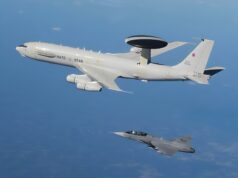
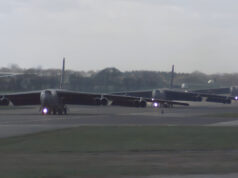
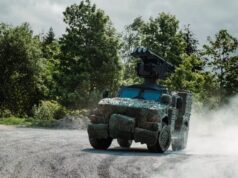
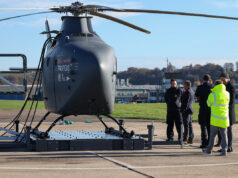
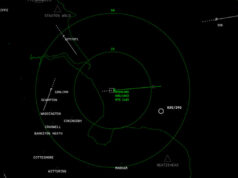
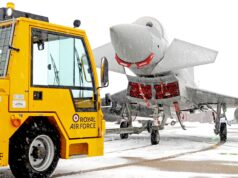
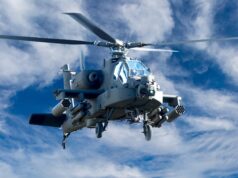
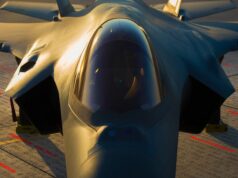
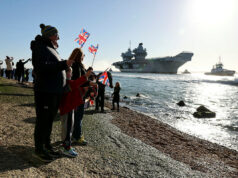

Interesting to read about the Osprey range and conditions improvement. Can I ask how ?
Probably the ability to take off and land with a full load and fuel load?
Maybe by doing a hybrid rolling take off that departs deck before the ski jump?
BTW That is pure speculation.
Hi SB, Osprey rolling takeoff. Dubious to say the least, danger of blades (kin huge) clipping the ramp. But as you see, evolutions trialed within reason. Remember helo’s on Ark n Lusty decks using rolling ramp launches, blades were very close to deck!! Crazy Bananas. Shit conkers every time. 😱🛫
Osprey rolling take-offs are accomplished by slight a tilt (maybe 30 degrees) of the nacelles. I’ve seen USAF Ospreys do this.
Good to see this progress as it represents a potential significant improvement in potential capability for the UK F35b fleet. Now all we need is for Lockheed Martin to get on and clear more weapon systems on the aircraft to fully realise that potential.
I read recently that the US are having similar fraustrations, although they will obviously be prioritised. LM have a very successful programme on their hands and yet they do not seem to know what to do with it..! If I was them I would be looking to ramp up production, reduce costs and cater for the widest possible range weapons, etc. as happy customers = more sales, but doesn’t seem to be the case here. Very odd.
Cheers CR
Yes indeed CR, thinking those thoughts myself. Trickle feed?? Why. 🤔👌.
They know what they are doing. Rinsing every penny. It’s a commercial company that’s goal is to make money.
They are the only company that has a 5th gen product with the capabilities needed by airforces.
True enough monkey,
Even so by peeing off their clients they are keeping the door open to next gen aircraft. Also they are hobbling their ability to respond when the next generation equipment starts to arrive as they are not scaling up. Effectively, baking in high prices. I know those projects are years away from delivering anything but there will likely be overlap.
Lets hope our politicians take that into consideration as they drip feed funds to Tempest. If that thing turns out half as good as it promises and turns up in the mid to late 2030’s as has been talked about it will be a definate competitor to late mod F35A.
Cheers CR
You’d think that LM are doing more than anyone else to get Tempest moving along quickly. Nothing like a slow foreign procurement plan to get domestic investment up!
A very interesting article on costings can be found here.
I understand that fitting cats and traps would be expensive and complex ( still nothing reported about the 2021 RFI on an EMAL system).
But would fitting a conventional arrestor system not be easier and more versatile than SRVL?
I appreciate that the B version doesn’t have an arrestor hook but coul one be fitted?
This would also give the carriers a STOBAR capability for future heavy drones.
Hi PS, ref. see Ark Royal system.
👍.
Arrester hook on an F35B *, hmmm
🤔.
Why would having an arrestor hook be more versatile? I think SRVL doesn’t require the same deck coating.
Hi PeterS,
Fitting an arrestor hook to any aircraft that is not designed from the outset to have one is a serious challenge. Why?
Well the empennage (the back end of the aircraft) will need to be strengthened significantly to take the huge shock loads involved. Assuming there is room to add the required extra material, mechanism and power and control lines into what is likely to be an already cramped space, you have just moved the centre of gravity aft becuase of the extra weight sitting in the tail. That will have an impact on the flying characteristics of the aircraft potentially pushing it out of its safe flight envelope – not a place you want to go. So you will need to move other stuff forward or add weight forward to counter balance the effect. If you can’t quite get the cg back to where it started you will possibly have to check whether you can still carry the loads you were able to before adding the hook. If there is any doubt at all you will need to recertify very load to carry and release…
When it comes to complex systems, especially aircraft, everything has a knock on effect and as I have illustrated above the causal chains can be quite long and very very expensive to deal with.
Hope that helps
Cheers CR
Fascinating and logical post CR. Many thanks
Thanks for the explanation. I assumed that since the F35C has arrestor gear, it should be theoretically possible to adapt the B version. I appreciate that it may not add much to F35 operational flexibility but that, with a stated ambition of operating UCAVs, some kind of arrestor system would be necessary. That also assumes a UCAV could launch using the ski jump- effectively STOBAR operation for UCAVs.
I can’t see us finding the funds for a full EMAL system.
Arrester hooks require the whole airframe to be strengthened. Trying to stop a heavy plane quickly with just one point of contact is really stressful on the airframe.
The C model will be made stronger to be able to withstand those forces repeatedly.
It’s one of the reasons why carrier aircraft go out of service quicker.
It’s also a skill that needs to be maintained. The ability to control crash into a small area that’s moving takes practice and constant flight training to maintain the skills.
If going for arrestor gear it’s aswell getting catapults and suitable aircraft. This will then need dedicated naval squadrons and land based arrestor, catapults to maintain skills when not on carrier.
Indeed- there are many, many more accidents landing than taking off using CATOBAR, it’s why the angled deck was invented. They used to have problems crashing into lines of parked aircraft and pushing the one at the other end off the deck. Funny but bit hectic with propellors running 😉
I think the A version also has a form of arrester gear to be used only in case of landing problems. It was that sort of use I had in mind. If there is a problem with the lift fan, neither SRVL nor vertical landing will be possible.
“By the time she returns home shortly before Christmas, the Royal Navy say that they expect that the ship will have:
This is the only mention of testing of drones, but seems to refer to them in terms of supply provision only.
I thought they were supposed to be testing the Mojave STOL version of the MQ-9B too, surely that deserves its own bullet point?! Hopefully they haven’t cancelled that- would have been a real step.
Bit of a shame if they cancel that, it looked like the biggest advancement they were making on this deployment and would have been fun to watch as well
That’s what I thought too.
Best quick option for a persistent ASW platform for laying sonobuoys and relaying signals, surface search and strike (more for low-risk targets admittedly) and maybe even AEW if they could work out the data processing.
But even more as a springboard for more capable stuff that could follow if we go with that mini-CATOBAR setup they put out an RFI for, or potentially STOBAR.
Mojave were STOL using the ramp and no arrestor gear, but it would help the Navy work out what they want from the next load of UAVs and whether CATOBAR is really necessary or they can manage with STOL or Stovl